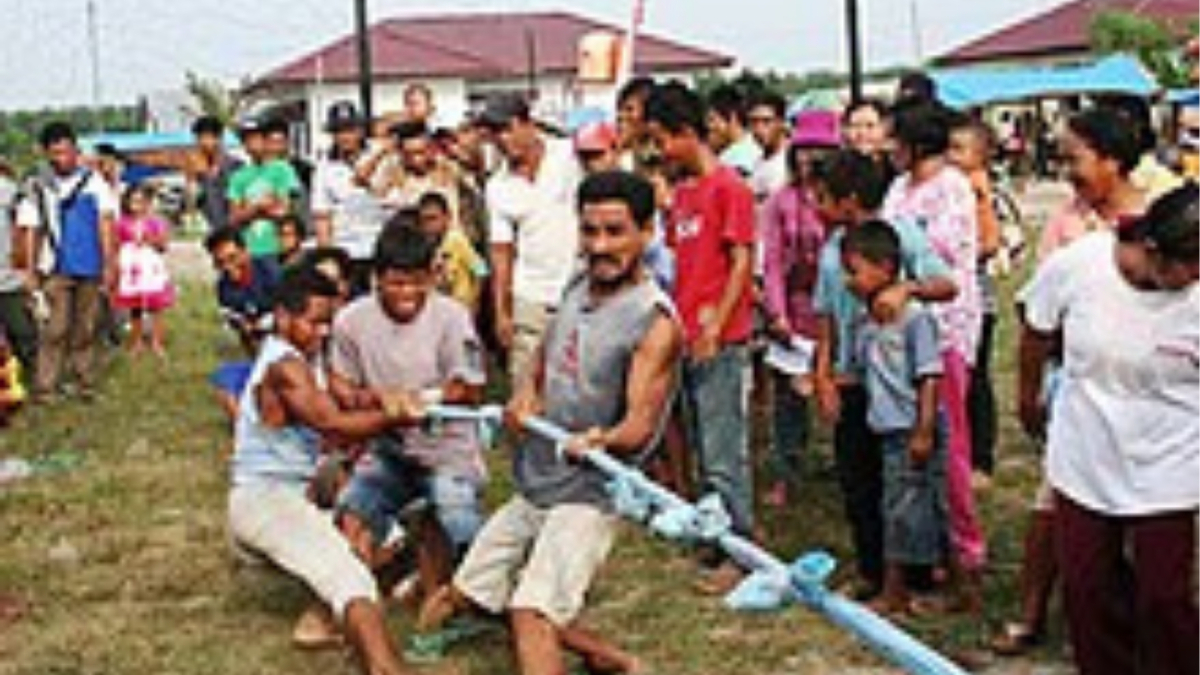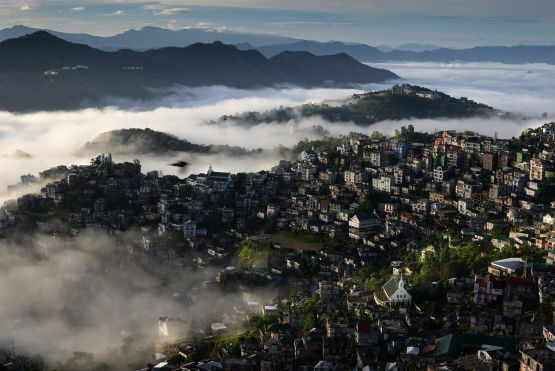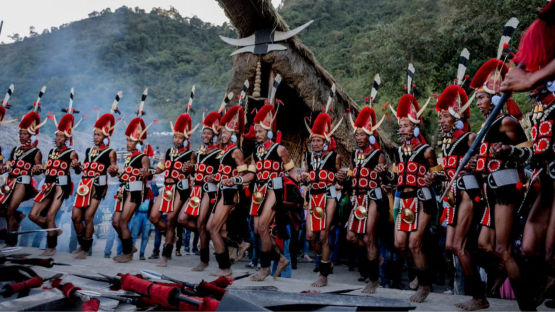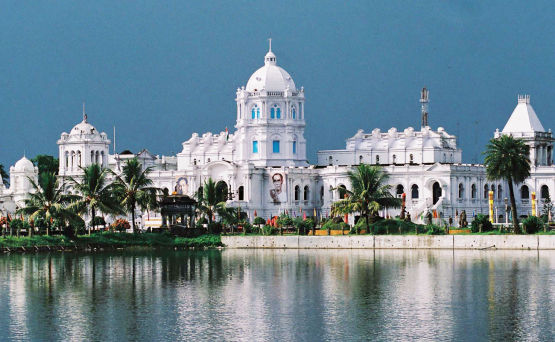Assam: Indigenous Sports Rooted in Tradition
Assam, the largest state in North East India, has a rich tapestry of indigenous sports, many of which are associated with physical strength and endurance. The state's sports tradition is closely tied to its agricultural and warrior heritage.

Kabaddi (Hadataal or Kabbadi in Assam): While kabaddi is popular across India, Assam has its own traditional variant. Played in rural parts, it involves two teams, where players attempt to tag opponents without being caught. It remains popular in villages and is often played during festivals and fairs.
Dhopkhel:
This traditional game combines elements of both sport and ritual, particularly played during the festival of Rongali Bihu. It is a fast-paced game where two teams throw a ball (dhop) across a field and attempt to catch or dodge it. It requires agility, strength, and team coordination. Though it is not as widely played now, efforts have been made to revive Dhopkhel as a cultural sport of Assam.
.jpeg)

Buffalo Fighting (Moh-Juj):
Buffalo fights are a traditional part of Assamese rural festivals, especially during Magh Bihu (harvest festival). The buffaloes are raised and trained specifically for these contests, which are a major attraction during the celebrations. Though controversial due to animal rights concerns, buffalo fighting remains a cultural relic of Assam's agricultural history.
Boat Racing:
Due to Assam's extensive river network, boat racing has been an integral part of the state's traditional sports. Villages and communities along the Brahmaputra and its tributaries organize competitive boat races, particularly during festivals like Bihu and Ali Ai Ligang. The races foster a h2 sense of community and teamwork.
Arunachal Pradesh: Sports Reflecting Tribal Strength

Arunachal Pradesh, known for its rugged terrain and diverse tribes, boasts several indigenous sports that are a reflection of the physical endurance and skills of the local population.
Archery:
Archery is an ancient sport among the tribes of Arunachal Pradesh, particularly the Nyishi and Adi tribes. Traditionally, archery skills were vital for hunting and self-defense. Today, archery competitions are often held during festivals and social gatherings, keeping the ancient tradition alive.
Dapo:
Dapo is a form of traditional wrestling practiced by the Mishmi tribes. This wrestling sport demands great physical strength and technique. It is often performed as part of festivals or celebrations, with participants grappling for dominance while showcasing their skills and power.

Sikpi (Bamboo Fighting):
Bamboo fighting, also known as Sikpi, is an indigenous martial art form practiced by several tribes in Arunachal Pradesh. Fighters use bamboo poles as weapons to attack and defend themselves in mock combat. The sport is part of tribal rituals and displays the martial traditions of the people.
Manipur: The Cradle of Polo and Martial Sports
Manipur is home to Sagol Kangjei, a precursor to modern polo, and has a deep-rooted tradition in martial sports, making it one of the most prominent states in India when it comes to indigenous sports.Sagol Kangjei (Traditional Polo):
Sagol Kangjei is considered the oldest form of polo in the world, originating from Manipur. Played on horseback, Sagol Kangjei was a game of the royal court and has h2 ties to the martial and equestrian culture of the region. Today, Manipur is still regarded as the birthplace of modern polo, and the game continues to be played with great enthusiasm, particularly during festivals like Lai Haraoba.

Mukna:
Mukna is an indigenous form of wrestling from Manipur, requiring strength, skill, and stamina. It is a traditional sport enjoyed during the Yaoshang festival (Manipur's version of Holi) and is widely celebrated by the local populace. Mukna players, called Yaanba, use specific techniques and grips to subdue their opponent, making it one of the most competitive sports in the region.
Thang-Ta:
Thang-Ta is an ancient Manipuri martial art that involves the use of swords (thang) and spears (ta). This martial art form was originally used by warriors and is still practiced today as a means of physical fitness, self-defense, and cultural preservation. Thang-Ta performances are an important part of cultural festivals and are seen as a source of pride for Manipuris.
Meghalaya: Traditional Games of the Khasi and Garo Tribes

The hilly state of Meghalaya, home to the Khasi, Jaintia, and Garo tribes, has its own set of indigenous sports that reflect the rugged landscape and the lifestyle of the people.
Archery (Teer):
Archery is a traditional sport in Meghalaya, particularly among the Khasi and Jaintia tribes. Teer, or archery betting, has even developed into a formalized activity where participants bet on the outcome of archery competitions. It remains an iconic sport, with archery ranges visible in many parts of the state. The winners are often chosen based on how close their arrow strikes a particular target.
Wangala Drumming Contests:
Though primarily a cultural ritual, the Wangala Festival of the Garo tribe includes drumming competitions that test the stamina and coordination of the participants. Drumming and accompanying dance contests are integral parts of the celebrations.
Mizoram: Endurance and Coordination in Traditional Sports

Mizoram is home to several unique indigenous sports, with activities that require precision, coordination, and physical strength.
Insuknawr (Rod-Pushing):
Insuknawr, or rod-pushing, is a traditional sport where two participants hold a long bamboo pole and attempt to push each other out of a ring. The game tests balance, strength, and technique. Insuknawr is still popular in rural areas and is a mainstay during Chapchar Kut, the spring festival of Mizoram.
Khuang Cawi (Traditional Drum Contests):
Drum contests, a part of Mizoram's cultural festivals, involve teams of drummers competing to produce complex rhythms in sync with each other. These contests highlight the coordination and teamwork of participants and are an essential part of community celebrations.
Nagaland: Traditional Martial Sports and Wrestling

Nagaland, known for its warrior tribes, has preserved many martial traditions through its indigenous sports.
Naga Wrestling:
Naga wrestling, particularly among the Angami tribe, is a famous traditional sport in Nagaland. It is a form of unarmed combat where two opponents try to throw each other to the ground. The annual Naga Wrestling Championship is a major event, attracting participants and spectators from all over the state and beyond.
Archery:
Like many other North East states, archery is an important traditional sport in Nagaland. Tribal archery competitions are held during festivals like the Hornbill Festival, reflecting the martial heritage of the Naga people.
Sikkim: Indigenous Sports in the Land of the Himalayas
In Sikkim, the rugged terrain has given rise to several traditional sports that require endurance, agility, and precision.


Archery:
Archery is deeply rooted in Sikkimese tradition and is especially popular among the Lepcha tribe. Competitions are often held during festivals like Losar (Tibetan New Year), and archery remains a beloved sport that requires precision and skill.
Stone Throwing and Tug of War:
Among the Bhutia and Nepali communities, stone throwing and tug of war are traditional sports that test participants' strength and teamwork. These sports are commonly part of local festivities.
Tripura: Traditional Sports of the Hill Tribes
Tripura, with its diverse tribal population, has a wealth of indigenous sports that are still practiced today.


Wrestling:
Wrestling is a popular traditional sport in Tripura, particularly among the Reang and Tripuri tribes. The wrestling contests are a demonstration of physical strength and skill, and are usually organized during festivals or community gatherings.
Archery:
Similar to other North East states, archery is an essential part of tribal tradition in Tripura. It is not just a sport but also a historical hunting practice that continues to be celebrated during cultural festivals.












